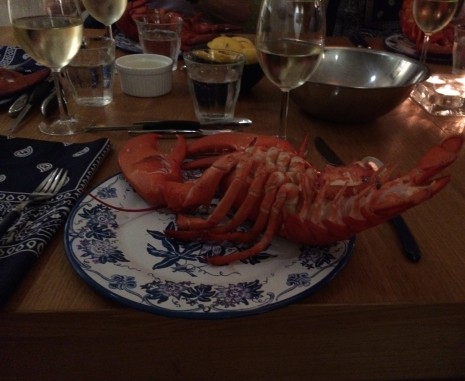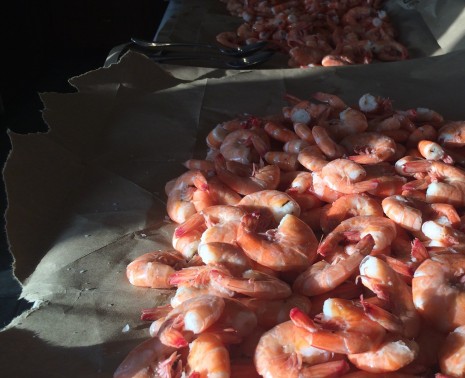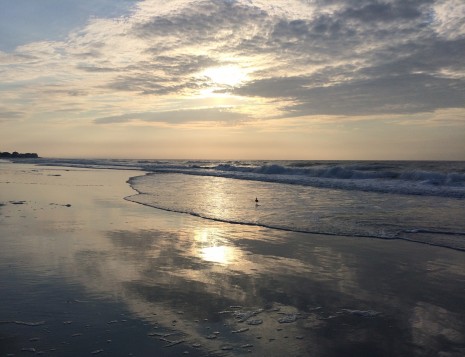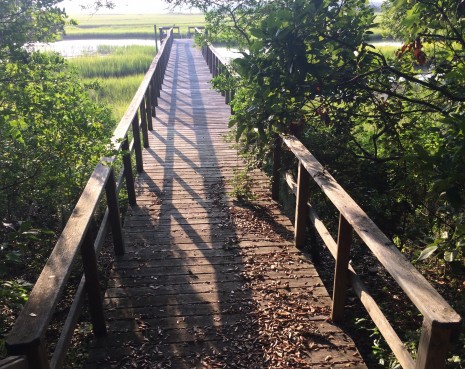BEACH EATS
Early in the morning, the water looks like a sheet of mercury glass. Being not exactly cool, but not hot, either, it’s an excellent time to walk the beach and think about—well, supper. It’s hours away, but still. Time rolls into itself when you are on vacation, and when a houseful of people need to be fed, it’s important to strategize, and think big.
Up in New York and New England, this usually translates to a shore dinner—briny steamers and lobsters, with their characteristic deep, oceanic tang, bolstered with sweet corn on the cob and boiled potatoes that taste like they were dug yesterday. Which, quite possibly, they were. Our friends Linda and Patricia do a slap-up job of this, giving one of the world’s most hands’-on meals real élan.
South of the Mason-Dixon Line, however, what I crave is shrimp—local, wild, just-caught shrimp—and lots of them. I’ve written about them before, but a few points bear repeating. I find medium shrimp the easiest size to deal with, and I never fool with deveining. Especially if they’re heads-off, why breach their thin armor, exposing any more of that delicate, tender meat to the elements?
Having come from a long, distinguished line of shrimp lovers, I know to cook the shellfish in the smallest amount of water possible, covering them by about two inches. If you’ve busted loose at the store or roadside shrimp stand and bought 10 or 12 pounds, say (every self-respecting adult I know can put away at least three quarters of a pound), you’ll want to cook them in batches. As far as the seasoning goes, I like to add a quartered lemon and enough sea salt to make cold water from the tap taste like the Atlantic. If you are a fan of Old Bay, Zatarain’s, or a homemade seafood-boil blend, humor me and use a light hand. The point, after all, is the clean, briny-sweet flavor of the shellfish.
You do want to bring the seasoned water to a rolling boil before adding the unpeeled shrimp, but don’t wait until the water returns to a boil before starting the timing. Depending on the size of the shrimp and how many pounds are in the pot, I begin checking for doneness at about two minutes. Once the shrimp are a beautiful rosy-pink on the outside, opaque inside, and firm yet tender in texture, immediately drain them in a colander. Remember that they’ll continue cooking once they’re out of the water; I like to spread them on a kitchen counter covered with brown paper bags, and sprinkle with more sea salt. People should eat them hot out of the shell, with melted butter or cocktail sauce spiked with lemon and horseradish. As far as sides go, how could corn on the cob and new potatoes be bad? Butter beans and rice or grits—ditto.
Then again, there’s the whole day ahead of me. I could go crabbing.
Posted: July 21st, 2015 under cooking, people + places, summer.



